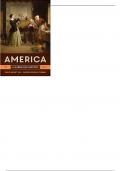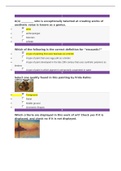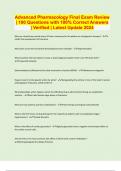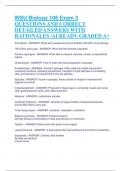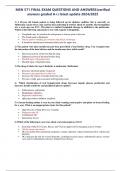Exam (elaborations)
America A Narrative History (Vol. 1) 10th Edition, Kindle Edition by David E. Shi - Test Bank
- Module
- America A Narrative History
- Institution
- America A Narrative History
America A Narrative History (Vol. 1) 10th Edition, Kindle Edition by David E. Shi Complete Test Bank
[Show more]
